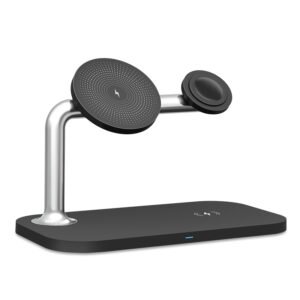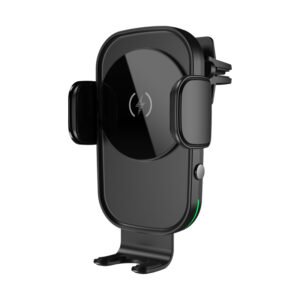In recent years, the use of wearables has become increasingly popular, with devices such as smartwatches and fitness trackers becoming ubiquitous. These devices require frequent charging, which can be a hassle for users. However, wireless charging has emerged as a convenient and efficient solution to this problem.
Wireless charging for wearables works on the same principle as wireless charging for other devices. A charging pad or dock is used to transfer power wirelessly to the wearable device, eliminating the need for cords and plugs. The convenience of this technology has made it a popular choice for wearable manufacturers and consumers alike.
One of the biggest advantages of wireless charging for wearables is convenience. Wearable devices are often worn throughout the day and night, and require frequent charging. With wireless charging, users can simply place their devices on a charging pad or dock when they are not in use, and the device will automatically begin charging. This eliminates the need for cords and plugs, which can be cumbersome and inconvenient.
Another advantage of wireless charging for wearables is safety. With traditional charging methods, wearables can become damaged if the cord is pulled or the plug is inserted incorrectly. Wireless charging eliminates these risks, providing a safer and more reliable charging solution.
Wireless charging also offers a more efficient charging experience. With traditional charging methods, wearables can take several hours to fully charge. However, wireless charging is typically faster, allowing wearables to charge more quickly and efficiently.
In addition to these benefits, wireless charging for wearables can also improve the user experience. Wearables are often designed to be sleek and stylish, and cords and plugs can detract from their aesthetics. With wireless charging, wearables can maintain their sleek design while still being charged efficiently.
As the use of wearables continues to grow, so too does the demand for wireless charging technology. Wearable manufacturers are increasingly incorporating wireless charging into their devices, and consumers are increasingly expecting it. This technology is meeting the needs of an increasingly connected world, providing a convenient and efficient way to charge wearables.
In conclusion, wireless charging for wearables is a convenient, efficient, and safe solution to the problem of frequent charging. Its advantages include convenience, safety, efficiency, and improved user experience. As the use of wearables continues to grow, wireless charging will become an increasingly important technology for manufacturers and consumers alike.













